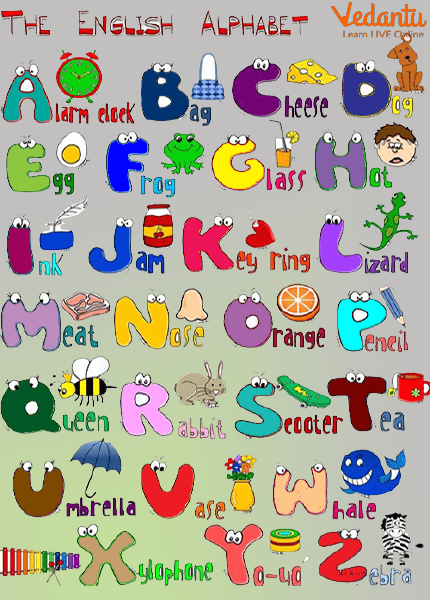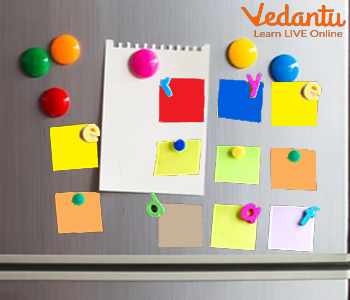




Boost Creativity and Skills With Interactive Activities for Children
Common ideas are so quick that young kids are not able to form complex ideas. Many psychologists of this century have coined the traditional thesis that the newborn child's mind is a blank slate (tabula rasa) in which the accumulation of experience is constantly stimulated. It was a similar notion that language is a natural prerequisite for children to learn activity ideas for kids, and that without language infants cannot comprehend ideas. Infants are born with a limited response and spend most of their first months asleep, making them seem genuinely passive and clueless. Until recently, there was no clear way to prove otherwise.
Learning for kids is not a difficult task, kids till the age of 10 have the ability to grasp concepts very quickly. In this article, you will learn about some educational activities for kids in a fun and interesting way.
Kids Learning Activities
Here are some kids learning activities.
Alphabet Through Pictures
This activity includes learning the alphabets through photographs. The images are animated so that kids find them interesting and easy. This is also an educational pastime for kids. The fun learning materials for kids can be found in the below-given activities.

Alphabet kids Learning Through Pics
The above-given picture is an excellent form of kids learning images, as kids learn easily through images. This is an exciting getting-to-know hobby for kids. Send them off on an adventure hobby, and let them examine letters whilst having amusement.
Things required for this activity:
A digicam
Pieces of paper
A marker
How to do this activity?:
Give a child a digital camera (a primary model with fewer chances of damage).
Ask them to take images of objects that range from A to Z.
They can collect photographs of ants, apples, biscuits, cats, and so forth.
This activity will assist your children with companion photographs with gadgets at the same time while working towards their vocabulary in a fun way.
Free Worksheets and Printables for Kids
Below are some kids learning activities, in which a proper method and things have been mentioned on how to proceed with them. For doing this activity, we need to select the grade in which the child is studying. Then we need to select a subject. Sight words are an important form of recreation and also an educational pastime for kids. Children like to play guessing games. This is one such activity.
Things required for this activity:
A word list
A marker
eighty index cards
How to do this activity?:
You can pick the phrases based totally on your toddler’s age and vocabulary.
Ask your baby to lay the index cards face-down, in a row, at the table.
They will rotate a card, see the word and study it aloud.
Then, turn to some other card and examine that aloud. However, if the two cards are not in shape, he/she needs to maintain them back again, face-down.
Repeat this until all the cards have been matched.
What will kids learn?: Your kids learn to sight words, construct their vocabulary, and enhance their reading abilities.
Sequencing Sentences

Kids Learning
Ask a child, you will often hear them say, "What happened?" This is because the concepts of beginning, middle and end do not exist in their understanding. Sequencing is important for children to learn. The following is an activity that kids can indulge into to improve their sentence sequencing abilities.
We Need:
3x5 inches index playing cards
Pencils
Markers
6 flat, stick-on refrigerator magnets
Method:
Ask your child to think about any event. Whatever the event, the kid needs to be capable of remembering what has passed off.
Let them describe the event in 3 sentences. You will write them down on the index cards.
Attach two magnets at the back of every card and stick them to the fridge in random order.
Now, ask your toddler to position every sentence strip from the beginning, middle to the end.
Have your child read aloud to verify that the sequencing is correct.
Some examples to exercise sequencing are: “Mary brushes her teeth. Mary waits for the college bus. Mary eats her breakfast.” “I came back from school and took my footwear off. I had lunch. I went to cycle.”
What will your child learn?: Kids learn cohesive sequencing, writing, organising, and early literacy concepts.
The above-mentioned online activities for kindergarten kids can easily be found on the internet. You can also visit our website for such activities and worksheets.
Summary
Educational activities for children are useful resources in the child’s standard development and instil textbook information in kids through a casual approach. These sports make learning much less worrying and more exciting. Learning for kids has to be made in a fun and interesting way so that they won’t lose interest. These activities offer them many ways to analyse and many possibilities to educate what they’re getting to know and frame their sentences and ideas in the right manner.
FAQs on Learning Educational Activities for Kids That Make Learning Fun
1. What are educational activities for kids, and why are they important for development?
Educational activities for kids are tasks or games designed to stimulate learning and development in a fun, interactive way. They are crucial because they help build foundational skills in areas like literacy, numeracy, and critical thinking. These activities foster curiosity, enhance problem-solving abilities, and improve motor skills, all while making learning an enjoyable experience rather than a chore. They support cognitive, social, and emotional growth from an early age.
2. What are some examples of fun, interactive learning activities for kids at home?
There are many fun learning activities you can do at home to engage children across different subjects. Here are a few examples:
- For Maths: Use building blocks or toys for counting and simple addition. You can also involve them in cooking by measuring ingredients.
- For English: Create a story together where each person adds a new sentence, or play word games like I Spy to build vocabulary. Reading for kids becomes more engaging with such methods.
- For Science: Simple home experiments like sprouting a bean in a jar or mixing colours to see what new colours they form.
- For Art & Creativity: Use recycled materials like cardboard boxes and plastic bottles to build robots or castles.
3. How can parents make everyday routines more educational and interactive?
Parents can turn everyday routines into powerful learning opportunities. For instance, a trip to the grocery store can become a lesson in counting money, identifying food groups, or reading labels. During bath time, children can learn about sinking and floating. While setting the table, they can practise one-to-one correspondence by matching plates and spoons to family members. Asking open-ended questions like "What do you think will happen if..." during these activities encourages critical thinking and active participation.
4. What is the difference between structured learning activities and unstructured play?
The main difference lies in their purpose and guidance. Structured learning activities have a specific goal and rules, often led by an adult—for example, a worksheet on matching shapes or a guided science experiment. Unstructured play, on the other hand, is child-led and open-ended, with no specific learning objective. Examples include free-form drawing, building with blocks without instructions, or imaginative role-playing. Both are vital; structured activities teach specific concepts, while unstructured play fosters creativity, independence, and problem-solving skills.
5. How can educational activities be adapted for different age groups, like preschoolers versus primary schoolers?
Activities must be adapted to a child's developmental stage. For preschoolers (3-5 years), the focus should be on sensory and play-based learning. Activities like sorting objects by colour, finger painting, and singing nursery rhymes are ideal. For primary schoolers (6-8 years), activities can be more complex and rule-based. They might enjoy board games involving strategy, writing short stories, or conducting simple science experiments with a clear hypothesis and conclusion.
6. What is the role of play-based learning in a child's cognitive development?
Play-based learning is fundamental to a child's cognitive development. When children play, they are actively experimenting with the world around them. This process helps them develop memory, concentration, and language skills. For instance, building a tower with blocks teaches them about gravity and balance (physics concepts). Pretend play helps them understand social roles and develop symbolic thinking. It creates a low-stress environment where children can take risks, make mistakes, and build neural pathways essential for future academic learning.
7. How can I encourage a child who seems uninterested in traditional learning activities?
If a child is resistant to traditional activities, it's best to connect learning to their personal interests. If they love dinosaurs, introduce maths by counting dinosaur toys or read books about palaeontology. If they enjoy video games, explore educational games or use game characters to create stories. Another effective method is to make learning a collaborative and hands-on experience. Instead of a worksheet, build a model volcano together. The key is to shift the focus from a 'task' to a 'shared adventure' to reignite their natural curiosity.





















